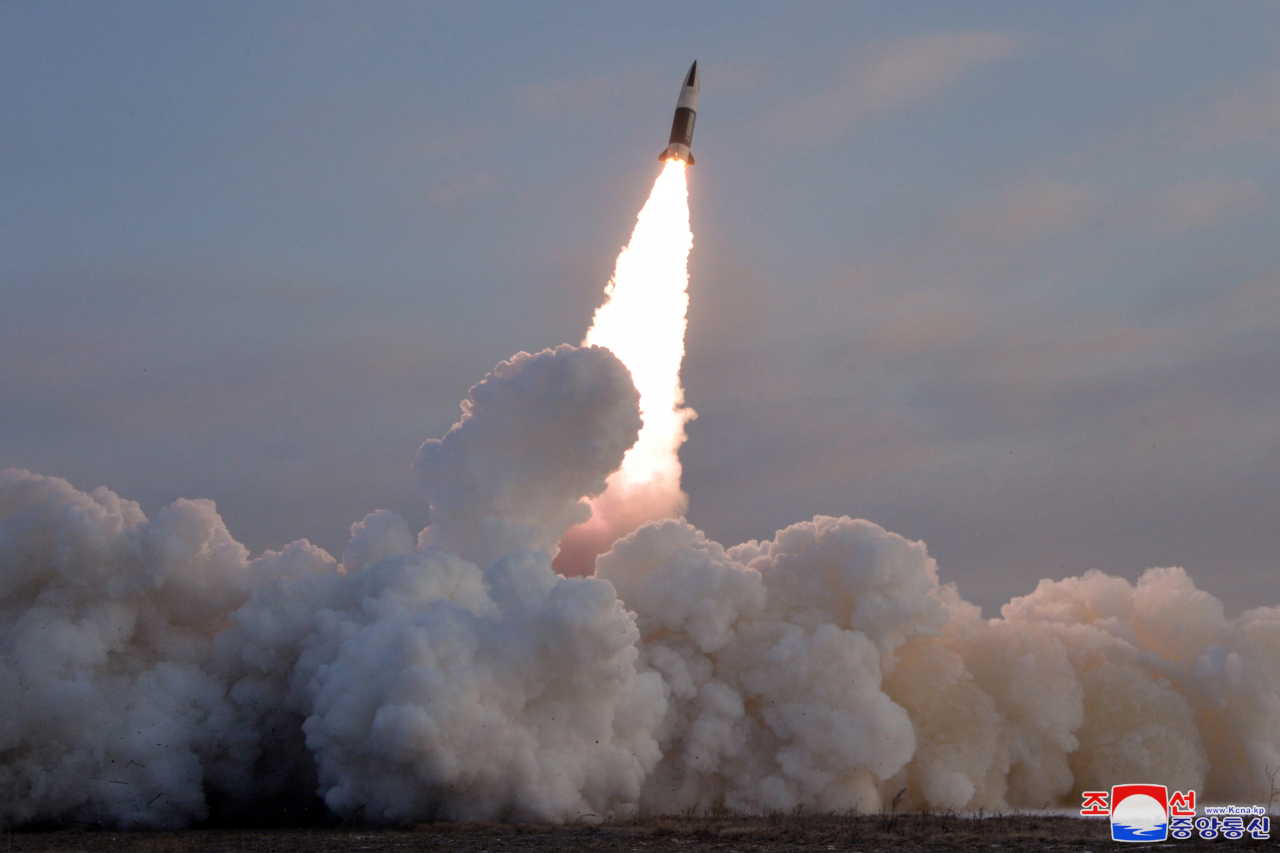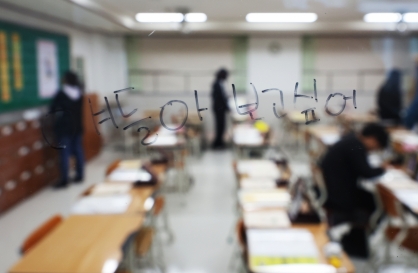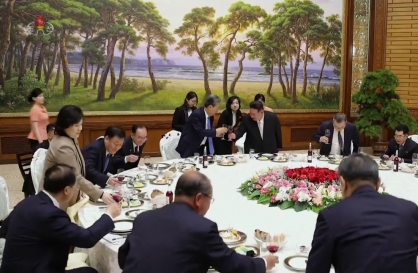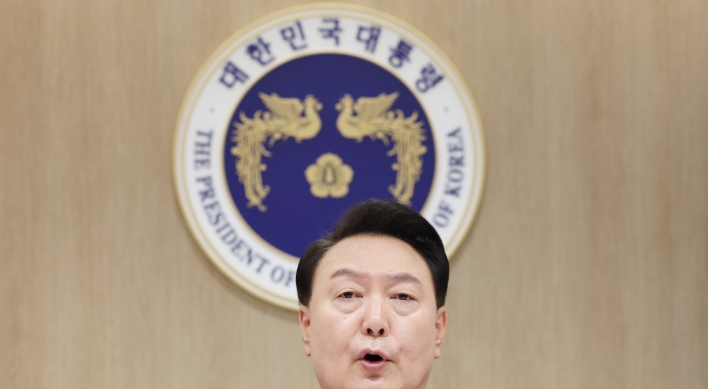‘Tactical guided missiles’ now under production, N. Korea says
KN-24 missile could potentially carry miniaturized nuclear warheads
By Ji Da-gyumPublished : Jan. 18, 2022 - 14:34

North Korea on Monday test-fired a pair of “tactical guided missiles” for the first time in around two years, Pyongyang’s state media reported the following day, saying it did so to confirm the accuracy and efficiency of the weapon system “under production.”
The report suggested that North Korea test-fired KN-24 short-range ballistic missiles, which look similar to the US MGM-140 Army Tactical Missile System, or ATACMS.
The KN-24 single-stage solid-propellant missile is a tactical system with a mobile launcher. The KN-24 reportedly performs “pull-up maneuvers” in flight to avoid interception and is capable of carrying out a precision strike with its guidance system and in-flight maneuverability.
Monday’s test-firing aimed to “selectively evaluate tactical guided missiles being produced and deployed and to verify the accuracy of the weapon system,” the state-run Korean Central News Agency reported in an English-language dispatch.
KCNA said the “two tactical guided missiles launched in the western area of the DPRK precisely hit an island target in the East Sea,” without further details. The Democratic People’s Republic of Korea is the North’s formal name.
South Korea’s Joint Chiefs of Staff on Monday said the two missiles were fired from the Sunan airfield in Pyongyang, which was last used as a launch site in September 2017.
The missiles traveled around 380 kilometers from the airfield to the small Alseom, an uninhabited island off the country’s east coast. The travel distance is approximately equidistant from the launch site to the South Korean Army, Navy and Air Force Headquarters in Gyeryong, South Chungcheong Province.
The North Korean media notably said the Academy of Defense Science “confirmed the accuracy, security and efficiency of the operation of the weapon system under production.”
But missile analysts say it is hard to verify the scale of missile production without additional information including production rates for solid-fuel missiles.
Two years since last test of KN-24
“As to why they choose to test this system, North Korea needs to continue to test ‘relatively new’ missile systems to ensure they perform as designed, which does require continued testing,” David Schmerler, a senior research associate at the James Martin Center for Nonproliferation Studies, told The Korea Herald.
Since 2019, North Korea has test-fired a newly developed triple set of new weapons systems, which consist of the KN-23 and KN-24 short-range ballistic missiles and KN-25 “super-large caliber” multiple-rocket launcher.
But Pyongyang notably test-fired the KN-24 missiles for the first time since March 2020. Monday’s test-firing marks the seventh and eighth test launches of the KN-24.
“The two-year delay between tests could be due to a number of factors, including political expediency. North Korea is most likely to conduct missile tests when they consider it to be politically beneficial,” said Michael Duitsman, a research associate at the James Martin Center for Nonproliferation Studies.
“Each of these windows can only fit a limited number of tests, and developmental tests of new systems probably take a higher priority than testing systems that have completed initial flight tests and entered service.”
Step change in tri-axis missile program
Duitsman said Monday’s launch was a “test to evaluate missiles that are in production and deployed“ based on the North Korean media report.
Echoing the view, Kim Dong-yub, a professor at the University of North Korean Studies in Seoul, said the media report suggested that the triple set of KN-23, KN-24, KN-25 solid-propellant, short-range ballistic missiles had been deployed.
Kim forecast that North Korea would establish a new corps of missiles comprising the solid-propellant Pukguksong missiles, Hwasong 12, 14 and 15, KN-23, 24 and 25, and others. The missiles have enhanced mobility, precision and maneuverability, as well as the ability to evade defenses.
“There appears to have been a step change in North Korea’s established tri-axis missile program consisting of Scud, Nodong (or Rodong), Musudan-type missiles as well as in the country’s strategies and tactics for missile employment,” he said.
Kim raised doubts about whether the missile defense system pursued by the South Korean military is capable of intercepting newly developed, enhanced missiles.
South Korea’s Ministry of National Defense on Tuesday also said it “assessed North Korea’s every missile launch as a direct and grave military threat” to the country.
“North Korea will continue to develop more advanced and accurate systems as their program continues. Concerns over this test should rather be aimed at the overall advancement of their missile program as a whole,” Schmerler said.
KN-24 armed with nuclear warheads?
In Seoul, concerns over Monday’s missile test particularly stem from the possibility of a KN-24 missile with its relatively large payload carrying tactical nuclear warheads. Some analysts see Pyongyang would seek to turn the KN-24 into a dual-capable missile.
But US missile analysts share the view that the KN-24 system is mainly intended for delivering conventional warheads.
“The KN-24 appears to be designed for a range of conventional submunitions, which may be field-swappable,” said Ankit Panda, a senior fellow at the Carnegie Endowment for International Peace.
“North Korea has provided no indication that the KN-24 will be nuclearized, but based on North Korea’s efforts in nuclear weapons design to date, they may be able to manufacture a compact enough warhead for this weapon.”
At the Eighth Party Congress, North Korean leader Kim Jong-un urged the country to produce more miniaturized and lighter nuclear warheads and to develop “tactical nuclear weapons.”
“The KN-24 could potentially carry a small nuclear warhead. Whether or not it carries a nuclear weapon in service depends on the role assigned to it in the North Korean military,” Duitsman said.
Analysts also say North Korea’s recent test-firing of four ballistic missiles in two discrete launches, which came after the Biden administration’s first sanctions designations, were carried out for both domestic and foreign policy purposes.
The North Korean media also conspicuously and unusually reported that the Second Economic Committee, which is subject to UN and US sanctions, conducted the plan for Monday’s missile test along with the Academy of Defense Science and other related institutions. But this is not an unprecedented report.
“I find the mention of the Second Economic Committee interesting,” Panda said. “The SEC is involved with missile production and overseas procurement; mentioning the Second Economic Committee’s involvement in a missile test shortly after the US sanctions action could be seen as a form of defiance, but we have no way of knowing for sure.”
By Ji Da-gyum (dagyumji@heraldcorp.com)
The report suggested that North Korea test-fired KN-24 short-range ballistic missiles, which look similar to the US MGM-140 Army Tactical Missile System, or ATACMS.
The KN-24 single-stage solid-propellant missile is a tactical system with a mobile launcher. The KN-24 reportedly performs “pull-up maneuvers” in flight to avoid interception and is capable of carrying out a precision strike with its guidance system and in-flight maneuverability.
Monday’s test-firing aimed to “selectively evaluate tactical guided missiles being produced and deployed and to verify the accuracy of the weapon system,” the state-run Korean Central News Agency reported in an English-language dispatch.
KCNA said the “two tactical guided missiles launched in the western area of the DPRK precisely hit an island target in the East Sea,” without further details. The Democratic People’s Republic of Korea is the North’s formal name.
South Korea’s Joint Chiefs of Staff on Monday said the two missiles were fired from the Sunan airfield in Pyongyang, which was last used as a launch site in September 2017.
The missiles traveled around 380 kilometers from the airfield to the small Alseom, an uninhabited island off the country’s east coast. The travel distance is approximately equidistant from the launch site to the South Korean Army, Navy and Air Force Headquarters in Gyeryong, South Chungcheong Province.
The North Korean media notably said the Academy of Defense Science “confirmed the accuracy, security and efficiency of the operation of the weapon system under production.”
But missile analysts say it is hard to verify the scale of missile production without additional information including production rates for solid-fuel missiles.
Two years since last test of KN-24
“As to why they choose to test this system, North Korea needs to continue to test ‘relatively new’ missile systems to ensure they perform as designed, which does require continued testing,” David Schmerler, a senior research associate at the James Martin Center for Nonproliferation Studies, told The Korea Herald.
Since 2019, North Korea has test-fired a newly developed triple set of new weapons systems, which consist of the KN-23 and KN-24 short-range ballistic missiles and KN-25 “super-large caliber” multiple-rocket launcher.
But Pyongyang notably test-fired the KN-24 missiles for the first time since March 2020. Monday’s test-firing marks the seventh and eighth test launches of the KN-24.
“The two-year delay between tests could be due to a number of factors, including political expediency. North Korea is most likely to conduct missile tests when they consider it to be politically beneficial,” said Michael Duitsman, a research associate at the James Martin Center for Nonproliferation Studies.
“Each of these windows can only fit a limited number of tests, and developmental tests of new systems probably take a higher priority than testing systems that have completed initial flight tests and entered service.”
Step change in tri-axis missile program
Duitsman said Monday’s launch was a “test to evaluate missiles that are in production and deployed“ based on the North Korean media report.
Echoing the view, Kim Dong-yub, a professor at the University of North Korean Studies in Seoul, said the media report suggested that the triple set of KN-23, KN-24, KN-25 solid-propellant, short-range ballistic missiles had been deployed.
Kim forecast that North Korea would establish a new corps of missiles comprising the solid-propellant Pukguksong missiles, Hwasong 12, 14 and 15, KN-23, 24 and 25, and others. The missiles have enhanced mobility, precision and maneuverability, as well as the ability to evade defenses.
“There appears to have been a step change in North Korea’s established tri-axis missile program consisting of Scud, Nodong (or Rodong), Musudan-type missiles as well as in the country’s strategies and tactics for missile employment,” he said.
Kim raised doubts about whether the missile defense system pursued by the South Korean military is capable of intercepting newly developed, enhanced missiles.
South Korea’s Ministry of National Defense on Tuesday also said it “assessed North Korea’s every missile launch as a direct and grave military threat” to the country.
“North Korea will continue to develop more advanced and accurate systems as their program continues. Concerns over this test should rather be aimed at the overall advancement of their missile program as a whole,” Schmerler said.
KN-24 armed with nuclear warheads?
In Seoul, concerns over Monday’s missile test particularly stem from the possibility of a KN-24 missile with its relatively large payload carrying tactical nuclear warheads. Some analysts see Pyongyang would seek to turn the KN-24 into a dual-capable missile.
But US missile analysts share the view that the KN-24 system is mainly intended for delivering conventional warheads.
“The KN-24 appears to be designed for a range of conventional submunitions, which may be field-swappable,” said Ankit Panda, a senior fellow at the Carnegie Endowment for International Peace.
“North Korea has provided no indication that the KN-24 will be nuclearized, but based on North Korea’s efforts in nuclear weapons design to date, they may be able to manufacture a compact enough warhead for this weapon.”
At the Eighth Party Congress, North Korean leader Kim Jong-un urged the country to produce more miniaturized and lighter nuclear warheads and to develop “tactical nuclear weapons.”
“The KN-24 could potentially carry a small nuclear warhead. Whether or not it carries a nuclear weapon in service depends on the role assigned to it in the North Korean military,” Duitsman said.
Analysts also say North Korea’s recent test-firing of four ballistic missiles in two discrete launches, which came after the Biden administration’s first sanctions designations, were carried out for both domestic and foreign policy purposes.
The North Korean media also conspicuously and unusually reported that the Second Economic Committee, which is subject to UN and US sanctions, conducted the plan for Monday’s missile test along with the Academy of Defense Science and other related institutions. But this is not an unprecedented report.
“I find the mention of the Second Economic Committee interesting,” Panda said. “The SEC is involved with missile production and overseas procurement; mentioning the Second Economic Committee’s involvement in a missile test shortly after the US sanctions action could be seen as a form of defiance, but we have no way of knowing for sure.”
By Ji Da-gyum (dagyumji@heraldcorp.com)




















